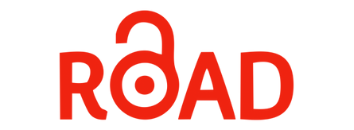Safety First, Performance Next: Exploring the Interplay between Perceived Safety Climate and Employee Performance
DOI:
https://doi.org/10.24002/kinerja.v27i2.7737Keywords:
safety climate, individual performance, occupational health and safety (OHS), organizational climateAbstract
This study probes the influence of a perceived safety climate on task and contextual performance. Using the Job Demand Resource model, it's hypothesized that a pronounced safety climate counterbalances high job demands. A questionnaire, grounded in established instruments of safety climate and employee performance, was administered to 46 construction workers. SEM-PLS analysis of this purposive sample highlighted that a perceived safety climate significantly elevates both performance facets. Such results mirror past studies, positing that safety-centric environments not only amplify task outputs but also inspire proactive organizational behaviors. Despite its insights, the study's reliance on self-reported data and its sampling approach pose limitations, hinting at future research directions. From a managerial standpoint, this underscores the pivotal role of a robust safety culture, not just in risk deterrence but also as an anchor for optimal employee output.
References
Bakker, A.B. and Demerouti, E., 2007. The Job Demands-Resources model: State of the art. Journal of Managerial Psychology, pp. 309–328. Available at: https://doi.org/10.1108/02683940710733115.
Bamel, U.K., Pandey, R. and Gupta, A., 2020. Safety climate: Systematic literature network analysis of 38 years (1980-2018) of research. Accident Analysis and Prevention, 135. Available at: https://doi.org/10.1016/j.aap.2019.105387.
Beus, J.M., Payne, S.C., Arthur Jr, W. and Muñoz, G.J., 2019. The development and validation of a cross-industry safety climate measure: Resolving conceptual and operational issues. Journal of Management, 45(5), pp.1987-2013. Available at: https://doi.org/10.1177/0149206317745596.
Cohen, J., 1988. Statistical Power Analysis for the Behavioral Sciences Second Edition. 2nd edn. New York: Lawrence Erlbaum.
Demerouti, E., Bakker, A.B., Nachreiner, F. and Schaufeli, W.B., 2001. The job demands-resources model of burnout. Journal of Applied psychology, 86(3), pp. 499–512. Available at: https://doi.org/10.1037/0021-9010.86.3.499.
Gillen, M., Baltz, D., Gassel, M., Kirsch, L. and Vaccaro, D., 2002. Perceived safety climate, job demands, and coworker support among union and nonunion injured construction workers. Journal of Safety Research, 33, pp. 33–51. Available at: www.elsevier.com/locate/jsr.
Hair, J.F., Hult, G.T.M., Ringle, C.M. and Sarstedt, M., 2021. A Primer on Partial Least Squares Structural Equation Modeling (PLS-SEM). Third Edition. Sage Publisher.
Haluk, E., 2016. The effect of safety climate perception on job performance and the mediating role of organizational commitment. International Journal of Economics, Commerce and Management, 4(3), pp. 163–179. Available at: http://ijecm.co.uk/.
Henseler, J., Ringle, C.M. and Sarstedt, M., 2015. A new criterion for assessing discriminant validity in variance-based structural equation modeling. Journal of the Academy of Marketing Science, 43(1), pp. 115–135. Available at: https://doi.org/10.1007/s11747-014-0403-8.
Kiyani, A.S.A., Rizvi, T.H. and Khan, M.S., 2019. Impact of safety climate on job performance and job satisfaction with moderating role of psychological capital. International Journal of New Economics and Social Sciences, 9(1), pp. 365–381. Available at: https://doi.org/10.5604/01.3001.0013.3056.
Koopmans, L., Bernaards, C.M., Hildebrandt, V.H., de Vet, H.C. and van der Beek, A.J., 2014. Measuring individual work performance: Identifying and selecting indicators. Work, 48(2), pp. 229-238. Available at: https://doi.org/10.3233/WOR-131659.
Setiono, B.A., Brahmasari, I.A. and Mujanah, S., 2019. Effect of safety culture, safety leadership, and safety climate on employee commitments and employee performance PT. Pelindo III (Persero) East Java province. Sebelas Maret Business Review, 3(1). Available at: https://doi.org/10.20961/smbr.v3i1.13680.
Syed-Yahya, S.N.N., Idris, M.A. and Noblet, A.J., 2022. The relationship between safety climate and safety performance: A review. Journal of Safety Research, 83, pp. 105–118. Available at: https://doi.org/10.1016/j.jsr.2022.08.008.
Zheng, J., Gou, X., Griffin, M.A., Goh, Y.M. and Xia, N., 2022. Temporal leadership, attentiveness, and safety behaviors: The moderating roles of abusive supervision and safety consciousness. Safety Science, 147. Available at: https://doi.org/10.1016/j.ssci.2021.105633.
Zohar, D., 1980. Safety climate in industrial organizations: Theoretical and applied implications. Journal of Applied Psychology, 65(1), pp. 96–102. Available at: https://doi.org/10.1037/0021-9010.65.1.96.
Zohar, D., 2003. Safety climate: Conceptual and measurement issues. in Handbook of Occupational Health Psychology. Washington: American Psychological Association, pp. 123–142. Available at: https://doi.org/10.1037/10474-006.
Downloads
Published
Issue
Section
License
Copyright (c) 2023 Yohanes Arga Poetra Birowo, Tegar Satya Putra

This work is licensed under a Creative Commons Attribution 4.0 International License.















